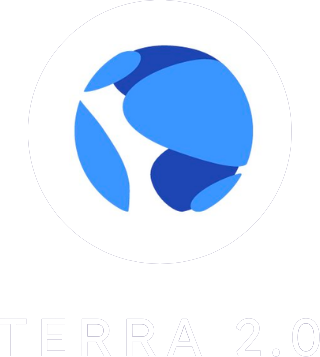- Product
- Documentation
- Blogs
- Contact us Exchange
TL;DR
Terra 2.0, a proposal to start a new blockchain, was announced on May 25th, splitting the community into Terra Classic and Terra. The proposal will drop the algorithmic stablecoin from the new chain and adopt the LUNA ticker in place of the ‘old’ chain which will become LUNC. The Terra Labs team is being investigated by South Korean officials regarding potential financial and security oriented crimes. As the Terra Labs team attempt to reinvent themselves, and preserve their development community along with what little good will remains from their recent adherents, a choice has been made to borrow the ‘Classic’ branding from Ethereum Classic. The underlying connotation that Terra Luna did everything they could to prevent a security issue that still wrought havoc is disingenuous and serves the Terra Luna team well in their upcoming defense against the state and the people of South Korea (along with everyone else who unidsiscerningly aped into the project).
If at first you don’t succeed…
The blockchain and DeFi ecosystem has a rich history of irreconcilable ideological rifts developing between project developers, participants and supporters. The Ethereum split into Ethereum and Ethereum Classic in 2016 is an excellent example of such differences in opinion and action. In response to the DAO hack of 2016, in which something to the tune of ~$50 million USD worth of Ether was hacked from an experimental DAO’s smart contract, the Ethereum network hard-forked into Ethereum and Ethereum Classic. Once the Ethereum core development team became aware of the exploit a decision was made to ‘roll back’ the blockchain such that users were effectively returned their stolen funds and the DAO hack was undone. A portion of the Ethereum community disagreed with this decision, instead opting for a hardline ‘code is law’ perspective, and decided to continue propagating blocks on the chain which included the DAO hack; this chain is Ethereum Classic. Ethereum has a bustling development community and has proved the platform of choice for DeFi. Ethereum Classic is still very much alive, although it isn’t operating at the same scale as Ethereum. Today Ethereum Classic has ~500 nodes and Ethereum has ~5,000 nodes.
We recently wrote about the collapse of Terra Luna’s UST token, which had its value controlled by that of a price variable speculative Terra Luna asset called LUNA. While the token had maintained its peg to the USD reasonably well historically, the crash was absolutely devastating to LUNA and UST holders. The entire Terra Labs core team have been summoned by a local South Korean Prosecutor's Office on financial and securities crime. An early team member has already testified and alleges that there were concerns within the Terra Labs team about UST’s design.
It’s unclear at this point how prevalent, articulate and well founded Terra Labs’ staff’s concerns were regarding the algorithmic stablecoin’s design. It is very clear that attentive and thoughtful industry observers had voiced reasonable concerns about the UST system Terra were building out at the time. Such as Twitter’s FreddieRaynolds who in November of 2021 articulated how a whale with hundreds of millions of dollars worth of crypto could launch a Soros-style Black Wednesday attack on Terra. The hypothetical attack described would have involved buying a large quantity of LUNA, buying more LUNA and swapping it for UST, selling your originally purchased LUNA, taking out a loan of UST from Anchor and using these funds to short LUNA.
An analyst at Scalar Capital expressed their serious doubt about the project 4 years ago while reviewing Terra. Analysts at the firm this author worked at around the same time also had similar, apparently very well founded, fundamental doubts about the viability of the UST algorithmic stablecoin. The comparison at the time, when MakerDAO’s DAI was still a relatively new pioneering decentralized stablecoin, was as if someone had built MakerDAO where the only collateral allowed was the MKR token. DAI is supported by the price of ETH and overcollateralized to help insure the value of DAI.
It is unclear what underpins (or ever underpinned) LUNA’s value. Terra Labs has had a partnership with a prominent mobile payments app called Chai, which has approximately 1 million MAU. The Chai app utilized Terra’s blockchain and in aggregate saw something to the tune of $3 million equivalent in daily payments. If some small percentage of this is taken as transactions fees, or could be, for protocol revenue then this might sensibly underpin some value for the network. In reality the ~$40 billion market capitalization of Terra in April of 2022 was not driven by a sustainable business model but instead by rampant speculation, as discussed in our previous piece on the matter. This is rather unlike ETH, the native asset of the world’s largest and best adopted smart contract platform.
All of this is to say, the LUNA Classic branding is a disingenuous conflation of circumstances with Ethereum Classic and the DAO hack. Simply put, Terra’s collapse was quite foreseeable whereas the bug enabling the DAO hack was not. Ethereum’s code had been audited by PhD students ahead of the 2016 DAO experiment. The association of Terra with Ethereum in virtue of the ‘classic’ nomenclature serves the Terra Labs founders to present their ecosystem’s collapse as the result of some bug which they took every step to prevent and still, unfortunately, missed. A poorly designed algorithmic stablecoin is absolutely not a re-entrancy attack (or any other overlooked Smart Contract bug). The South Korean investigators are likely aware of this distinction as well.
Einstein’s definition of Insanity
Trying the same thing repeatedly, all other things being equal, and expecting different results is a popular definition of insanity.
The Terra Luna team is in legal hot water for a number of reasons, at the very least because of the following: a consortium of South Korean inventors who lost money in the project are suing for fraud and other financial crimes alleging failures to honestly disclose and address risks to asset holders and particularly as these failures pertain to the unlimited expansion of Luna supply (the UST supply grew from less than 3 billion in NovemberNovemeber 2021 to almost 19 billion in May of 2022, see fig1). Do Kwon is also reportedly facing an ~$80 million fine for evading tax payments.

fig1. source
An appearance of taking steps to make the community aware of risks inherent to the project would help the Terra Labs team here. In response to the above tweet describing how whales could manipulate the Luna and UST markets in order to almost print money, Do Kwon responded with juvenile profanity and an apparent implorement for whales in his following to try and break the system. Not that this necessarily counts as relevant evidence admissible in court, though it doesn’t help Do Kwon’s optics here, to put it mildly.
The Ethereum community is consistently attempting to improve its professionalism and security oriented rigor. It might not always succeed, as evidenced by the DAO hack and myriad other security issues. Least Authority,a privacy oriented security research group focusing on decentralized web projects, had this recommendation for Ethereum developers in 2015:
“Recommendation: provide many more examples of thorough defensive contract programming.”
And further:
“The programming examples provided so far are inadequate to convey best-practices for writing safe contracts and coping with the gas mechanism. Introductory C++ textbooks frequently omit error checking for the sake of readability, and have resulted in countless security bugs. Ethereum's examples must teach better habits.”
In contrast to this sort of independent assessment from experts, the new Terra chain has had a code audited performed by an organization which specifically exists to audit the security of the Terra systems, SCV Security. The Ethereum community endeavors to hold itself to high standards and learn from mistakes. Evidence of the Terra Luna community acting similarly is still relatively scarce.

